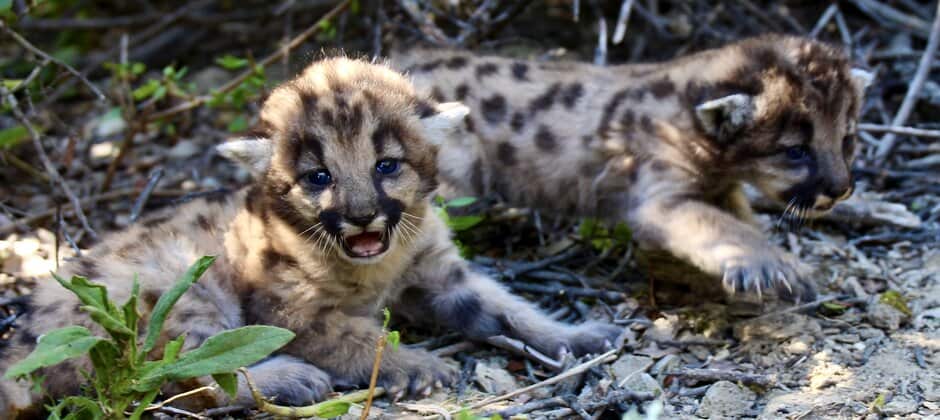Share this article
Do pathogens bioaccumulate in top predators?
Cougars, top predators with a wide-ranging palate, have been known to prey on bobcats and domestic cats when their regular ungulate prey isn’t available.
Jennifer Malmberg, an assistant professor and veterinary pathologist at the University of Wyoming, and her colleagues Lauren White at the National Socio-Environmental Synthesis Center and Sue VandeWoude at Colorado State University, began to notice that as the cougars (Puma concolor) came into contact with different prey species at or near urban areas, they were absorbing viruses from these prey.
“We were fairly frequently seeing viruses from domestic cats and bobcats in cougars,” Malmberg said.
The team started to wonder whether alpha predators like cougars might naturally be at higher risk for picking up diseases from their prey. If the big cats were absorbing viruses through consuming bobcats (Lynx rufus) or domestic cats (Felis catus), these viruses could also be mutating, or recombining inside the cougars, magnifying the potential problem.
“It’s really bioaccumulation of exposure to pathogens that presents a risk,” Malmberg said. While many exposures do not manifest as disease, the risk of disease increases as exposure accumulates.
As pumas are changing their prey sources, researchers like Malmberg are finding lack of research on how this affects their exposure to different infections. In a recent opinion paper published in Trends in Ecology and Evolution, Malmberg and her colleagues share the limited information they found in the literature and call for further research on the topic.
Through their review, the team discovered that while predators absorb viruses through their diets, many predators appear to be resistant to the viral onslaught — if they weren’t, the species wouldn’t persist. Cougars in Colorado seemed to absorb viruses, including several retroviruses like feline immunodeficiency virus and feline foamy virus from domestic cats and bobcats, for example, but those viruses didn’t make them sick.
But Malmberg said this isn’t always the case. Black-footed ferrets (Mustela nigripes) have contracted deadly plague bacteria from the black-tailed prairie dog (Cynomys ludovicianus) they specialize in preying on.
In other cases, introduced animals can bring new problems that predators can’t overcome. Florida panthers (Puma concolor coryi), suffered from an outbreak of feline leukemia contracted from domestic cats in the early 2000s that resulted in several deaths of the endangered cougar subspecies. Malmberg worries that as the world sees more habitat loss due to human development or climate change, and a continued influx of introduced species, predators will be exposed to more and more novel prey items that may introduce diseases that will impact predator populations.
“There’s evidence that predators are adapting to anthropogenic change, and that often means consuming different prey,” Malmberg said. “It would be a good time to do some more focused study on what the implications of that might be.”
Header Image:
Top predators like cougars may accumulate more pathogens than animals lower on the food chain.
Credit: Santa Monica Mountains National Recreation Area








